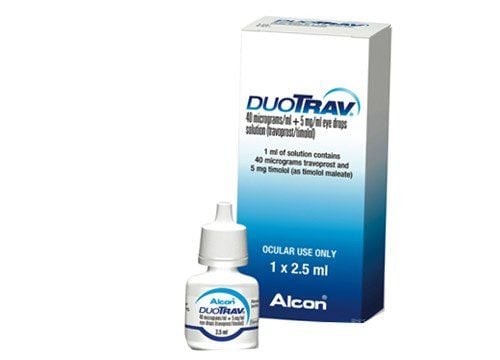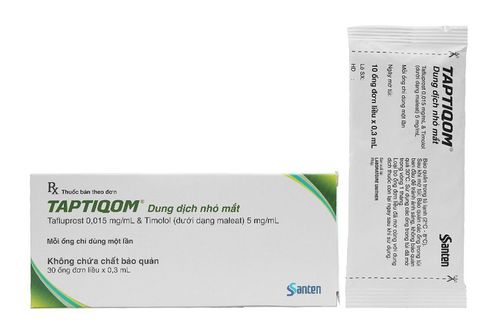This is an automatically translated article.
Betalol drug is used in the treatment of glaucoma, chronic open-angle glaucoma or lack of a lens. Learn some information about uses, doses and precautions when using Betalol to help patients use the drug safely and effectively.
1. What is Betalol?
Betalol is prepared in the form of eye drops, packaging specifications are 1 bottle of 5ml. The ingredient Timolol maleate 5mg/ml in Betalol is a beta1 and beta2 adrenergic receptor blocker (non-selective).
The mechanism of the ocular pressure-lowering action of beta-blockers is currently unknown, but fluorescence and intraocular pressure imaging have shown that these drugs decrease production and slightly increase aqueous outflow.
Active ingredient Timotol has no beta-stimulating effect, no membrane stabilizing effect, and no anesthetic. Unlike the mydriasis, Timotol has little or no modulating effect on pupillary dilation. The ocular pressure-lowering effect of Timotol is rapid, appearing about 20 minutes after instillation into the eye and reaching a maximum within 1-2 hours. Therefore, Timolol maleate is useful in lowering intraocular pressure in patients with glaucoma or other glaucoma conditions.
Timotol is absorbed systemically, plasma drug concentrations after eye drops have not been recorded.
2. What are the effects of Betalol?
The prescription drug Betalol is used in the treatment of the following conditions:
Glaucoma; Chronic open-angle glaucoma; Glaucoma due to absence of lens.
3. Dosage - How to take Betalol
Usage and recommended dosage of Betalol are as follows:
Eye drops 1 drop x 2 times/day. Note: The above dose of Betalol is for reference only. The specific dose of Betalol depends on the condition and the progression of the disease. To get the right dose of Betalol, patients should consult their doctor or healthcare professional.
4. Contraindications to the use of Betalol
Betaloc drug is not indicated for use in the following cases:
Patients with hypersensitivity to ingredients and excipients contained in Betalol. Patients with heart failure do not take drugs. Bradycardia < 40-50 beats/min. There are underlying diseases such as bronchial asthma and chronic bronchitis. Contraindications to the use of Betalol are absolute. This means that Betalol can not be used for any reason in cases of contraindications. Any decision on the dosage and administration of Betalol should be made according to the doctor's prescription.
5. Interactions with other drugs
Concomitant use of Betalol with the following drugs may occur:
Aminodarone. Medicines for high blood pressure. Note: To avoid unwanted interactions when using Betalol, patients should inform their doctor/pharmacist of all medicines, supplements, vitamins or herbs... appropriate indications.
6. Betalol side effects
Betalol drugs can cause some unwanted effects for patients as follows:
Dry and itchy eyes; Burning or stinging sensation when first taking Betalol; Transient visual disturbances. In addition to the above signs, Betalol can also cause other unwanted effects. Therefore, it is necessary to closely monitor and recommend that patients immediately notify their doctor of any unwanted effects encountered during the use of Betalol.
The basic information about Betalol in the above article is for reference only. Because Betalol is a prescription drug, patients should not use it on their own, but need to contact a specialist directly for a suitable prescription to ensure safety for health.













